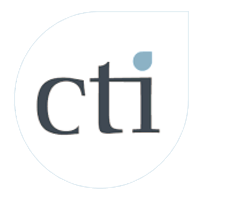The reason I talked about change before I discuss the topic of adversity is that change can be more intentional at times than adversity. We can and will experience many changes because that is what life offers. However, adversity is, by definition, a difficult situation or misfortune, and it is not something we welcome or intentionally bring into our lives. The same applies to challenges, so I will use the terms interchangeably.
How we deal with change is the foundation of our approach to adversity.

Love it or not, you can’t avoid it.
Remember the daughter I mentioned who was moving to San Diego? She became the poster child of my thoughts on adversity when she called, sounding dejected, and said, “This is a lot harder than I thought it would be!” There was a pause on my end because the many hats I wear were all competing for first response! Mother, therapist, life coach—three answers at the tip of my tongue! I will spare the details of this adventure, but needless to say, she flew (by choice) 3,000 miles from home with no real promising job prospects (yet) and confronted a month-long search just to find a place to live. On the challenge spectrum, you couldn’t ask for more!
So, the challenge is the normal part. To some degree, this is happening to many college graduates across the country. It is happening to executives in the work force. Essential to this storyline is how my daughter views, internalizes, and makes meaning of this challenge. She has been pushed out of her comfort zone and asked to grow and reach new heights.
How we learn to deal with adversity early on paves the way for a healthier and more effective approach to dealing with the inevitable bumps in the road.
Here’s to bumps! This post is for anyone who has dealt, or ever will deal, with adversity in his or her life!
Many of my clients will attest to my use of metaphor when trying to explain things—it’s the way my mind works. Think of challenges as being rocks on the beach. Some are sharp, others more rounded. If you have to get from one end of the beach to the other, you have a few choices. You can stand there and not move. No growth. You can try to walk across with bare feet. You may get to the other end, but with lots of pain! Or, you can provide your feet with some kind of protection—the proverbial shoe to cushion the sharp edges. You will still feel the bumps and discomfort, but you will get to where you are going in a less painful way. And, of significance, you might actually enjoy or take in more of the journey because you will focus less on what is uncomfortable or painful.
So, what kind of shoes are YOU wearing?
Adversity can hurt. Challenges can test us to limits we did not know we had. By no means do I intend to make light of or belittle the trials that many go through. However, if we are stuck in our discouragement or story, we will create negative pathways in our brains that will be called upon again and again when we hit bumps.
There are many suggestions in my past blogs about developing coping strategies to overcome and move past. These are helpful starting points to recalibrate your thought process in order to deal effectively with adversity, challenges, change, being stuck, etc. (Just look at the list on the Tolerance for Change blog.) True mental strength goes beyond surviving, or making the best of things, or putting on a smile. You need to turn to your strengths. You need a good pair of shoes!
Try these pointers on for size. When we deal with adversity from the perspective of strength, we employ these important elements:
Fostering the attitude that adversity happens and that it is a normal part of life. Maintain the perspective that the event, challenge, or current rough patch is just a moment in time. It does not define who we are as individuals or the entirety of our human experience.
Cultivating our internal resources: Courage, perseverance, inner strength, wisdom, resiliency, and coping skills—these qualities are developed and strengthened by our experience and our ability to overcome difficult situations. When we learn from our trials, and draw on these resources, we build our adversity muscle. Positive self-talk is another internal resource—how we talk about ourselves helps shape and create our reality.
Building and relying on external resources: Support systems can be personal: loved ones, friends, family; or professional: life coach, therapist, teacher, mentor, etc. The internal resource of wisdom provides the wherewithal to know when you need to reach out for help. Asking for help is not a weakness, but rather a strength that connects all of us in this thing called life. Most of us would not think twice about helping a friend, loved one, or co-worker in need, but lose that same sense when the tables are turned. Engage the help of your tribe!!
Practicing ways of tolerating discomfort. Here’s that word again…mindfulness! There are many ways to strengthen this muscle. As stated before, we cannot always control the circumstance, but we can control our response to it. Yoga, mediation, and mindful awareness are a few ways to work on this. It’s about being with whatever comes up. Understanding that the more we resist what we are experiencing, the more it will persist.
Finally, learning how to treat ourselves in a more forgiving, nurturing way will help determine how to face challenges from a perspective of strength. This is particularly difficult to do when you feel like you are fighting to stay above water. Treating ourselves with care might seem unnatural in a conversation about strength, but personal strength does not come from frenetic, chaotic energy. When we take time to nourish ourselves with positive activities, good food, and exercise, we find the calm inner strength needed to make it across the beach of rocks, even better than before.
[/et_pb_text][/et_pb_column][/et_pb_row][/et_pb_section]




